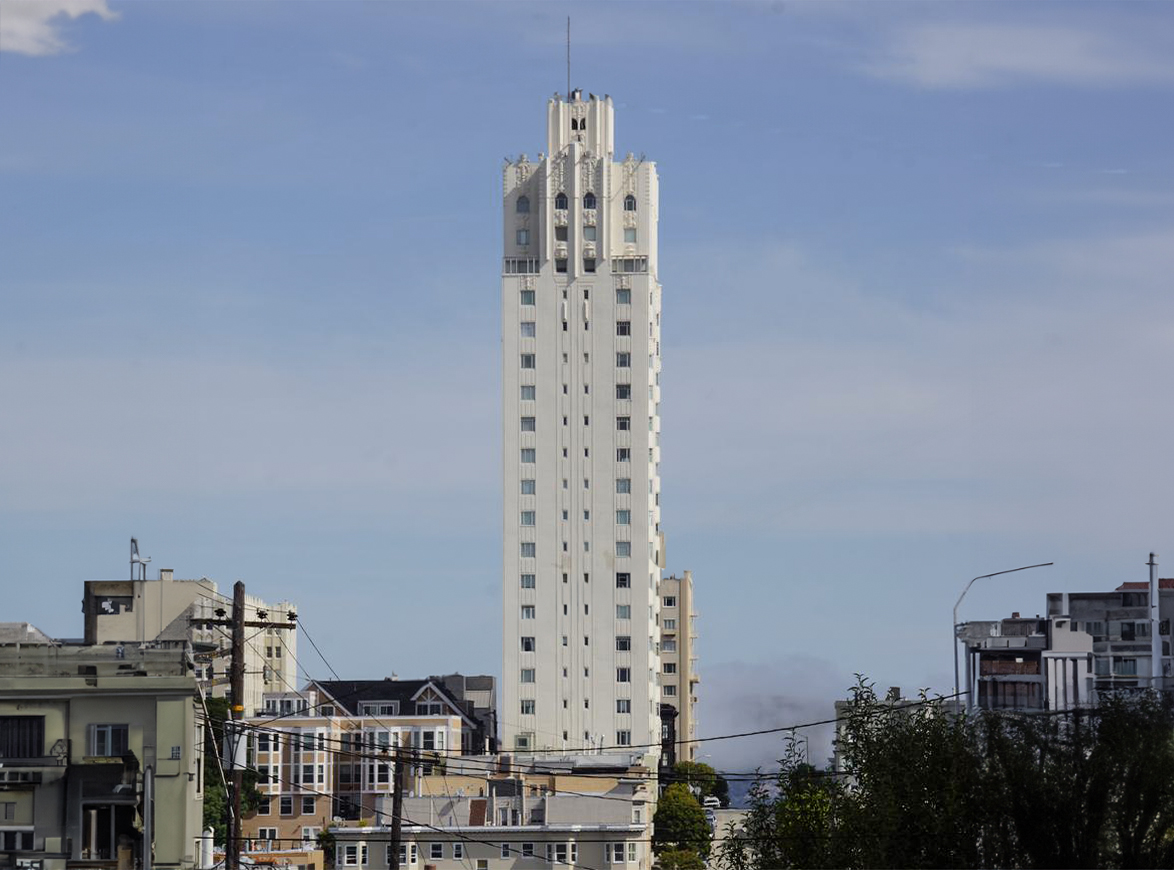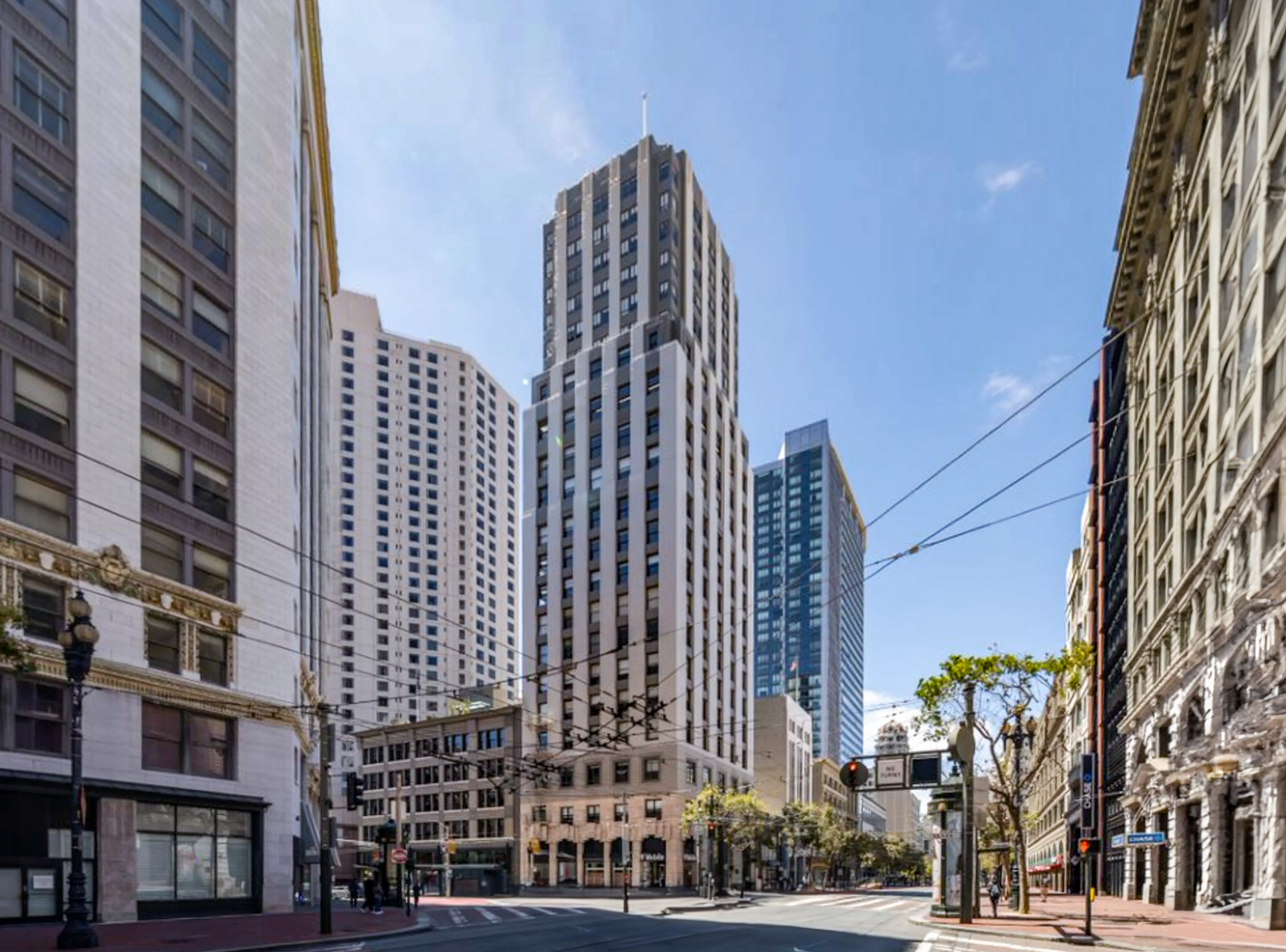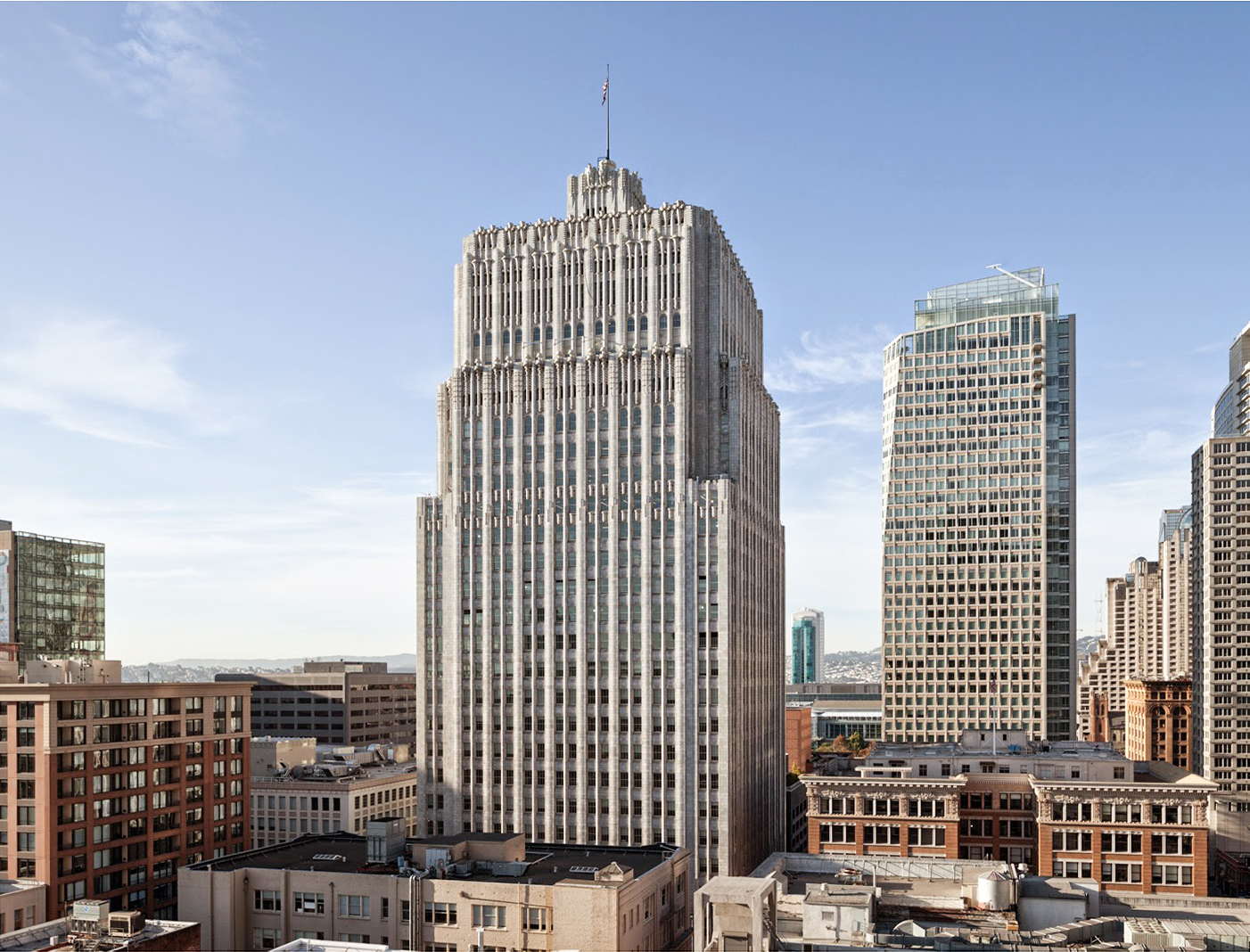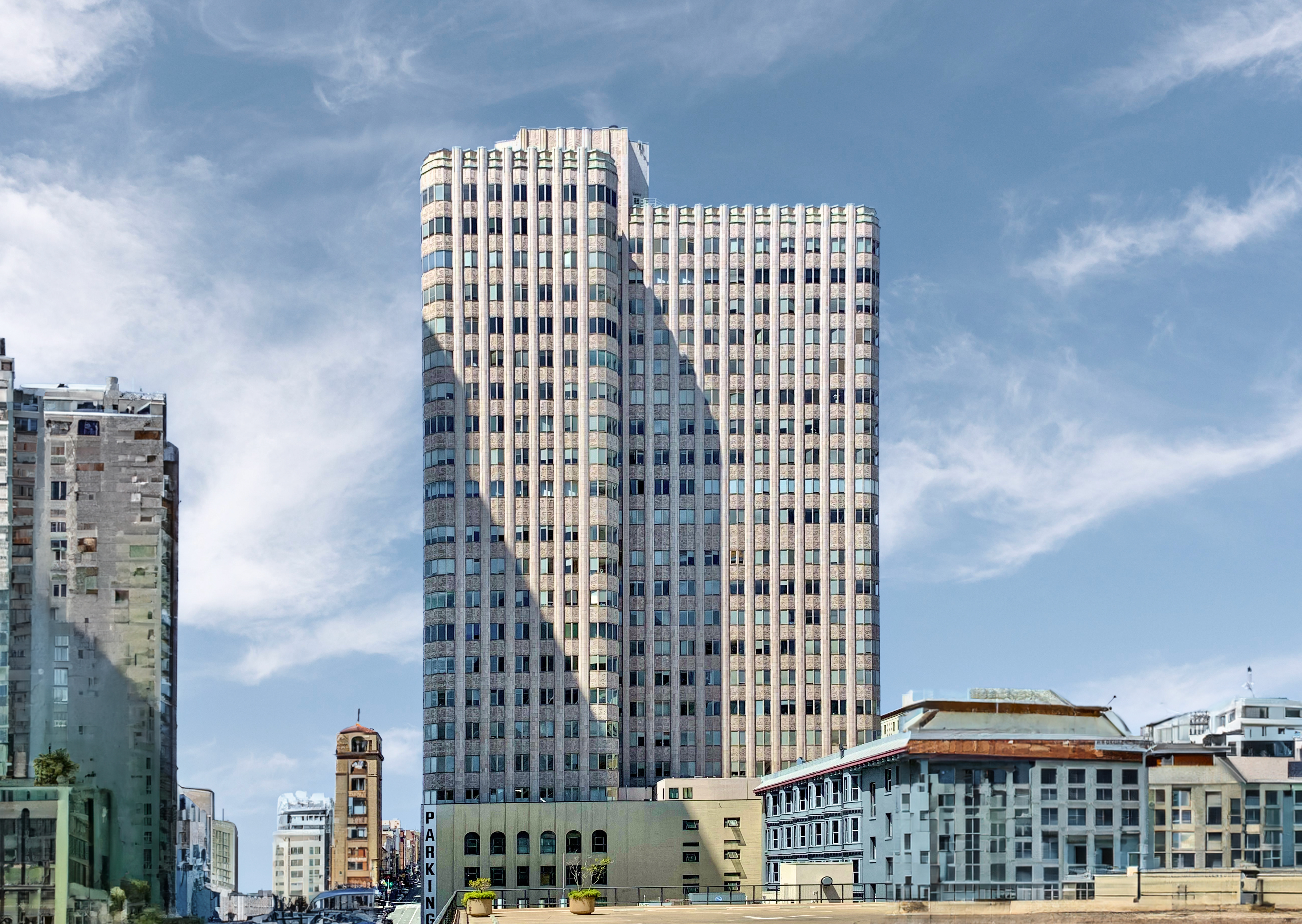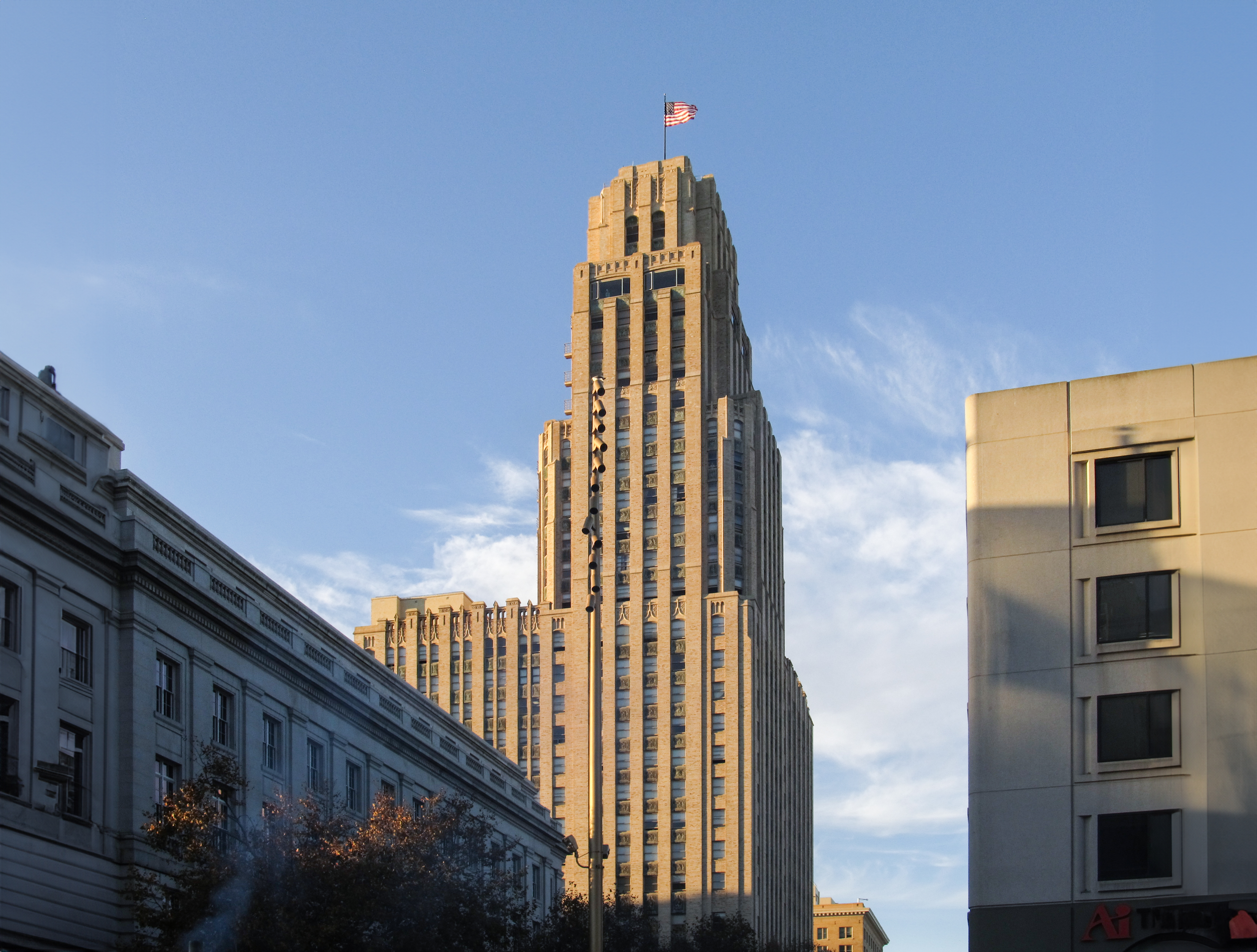The The Bellaire Tower is an Art-deco skyscraper designed in 1928 by Herman Carl Baumann, and built between 1929 and 1930 in San Francisco, CA.
The Bellaire Tower is not the only name you might know this building by though. It is common for companies to want to attach their names to iconic buildings when they move in, or for the general public to come up with nicknames, and this one is no exception. The The Bellaire Tower is also known, or has been known as, Jewel, or Superman building.
Its precise street address is 1101 Green Street, San Francisco, CA. You can also find it on the map here.
The building underwent a major restoration in 2018. The architect commissioned to undertake this restoration was JFM Enterprises Inc.
